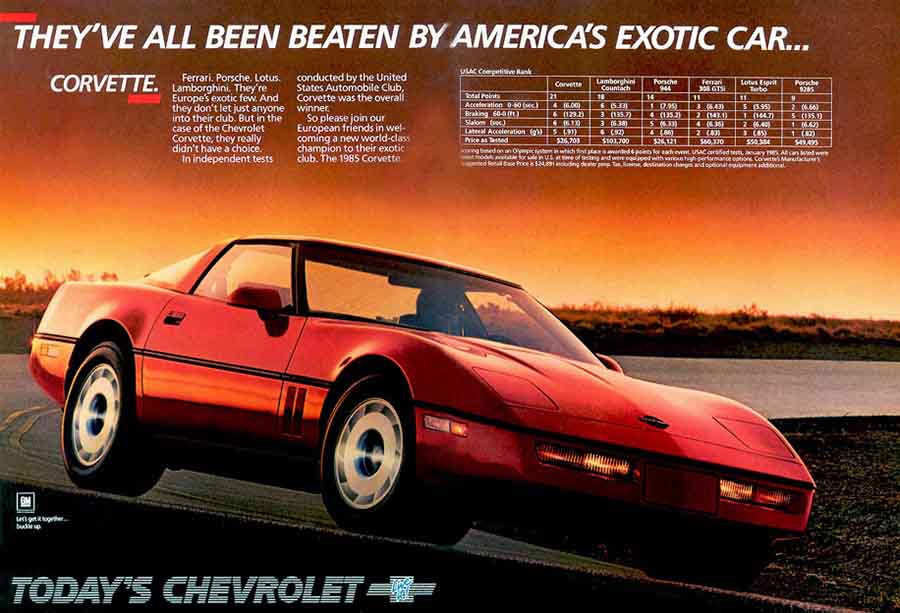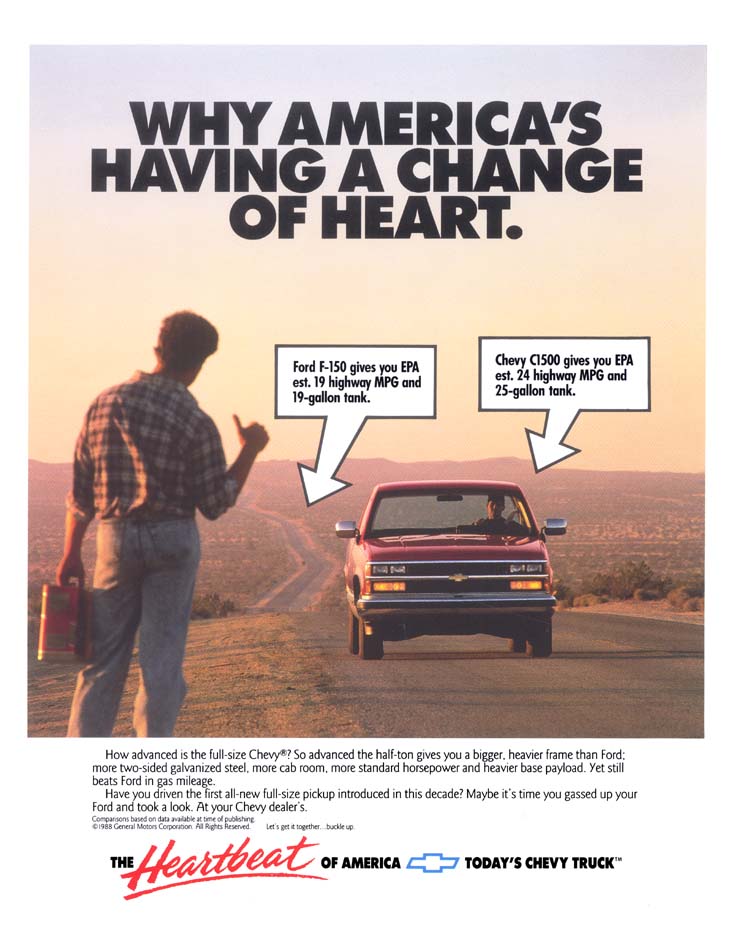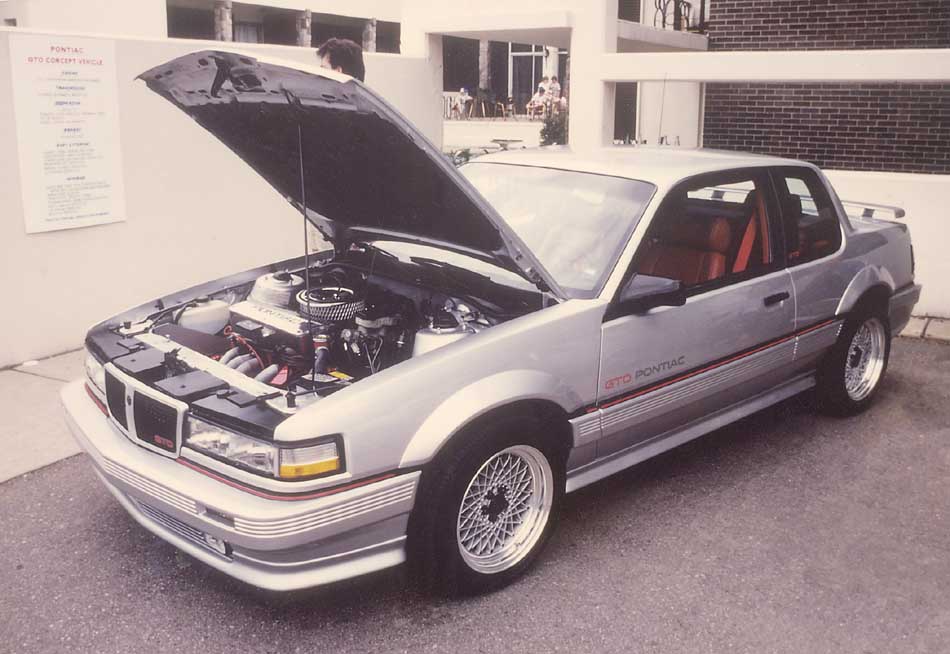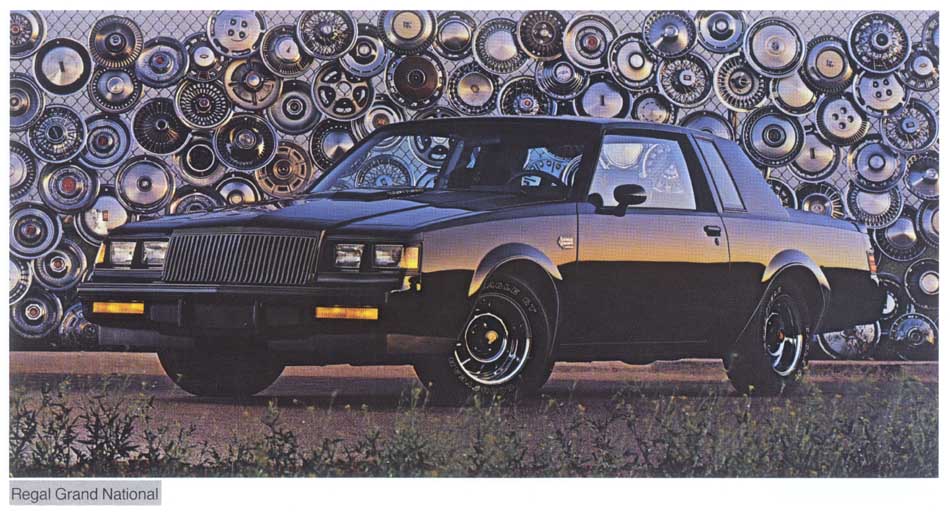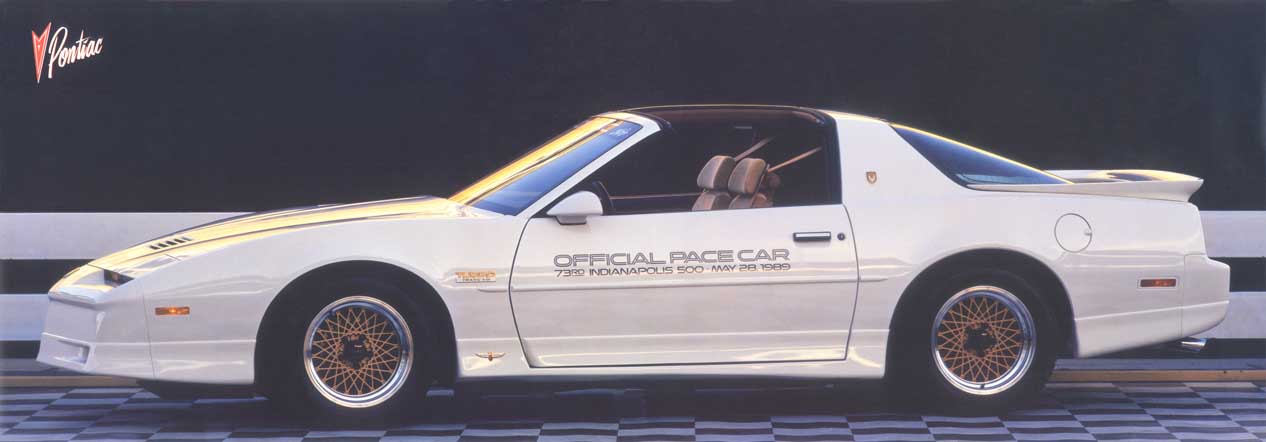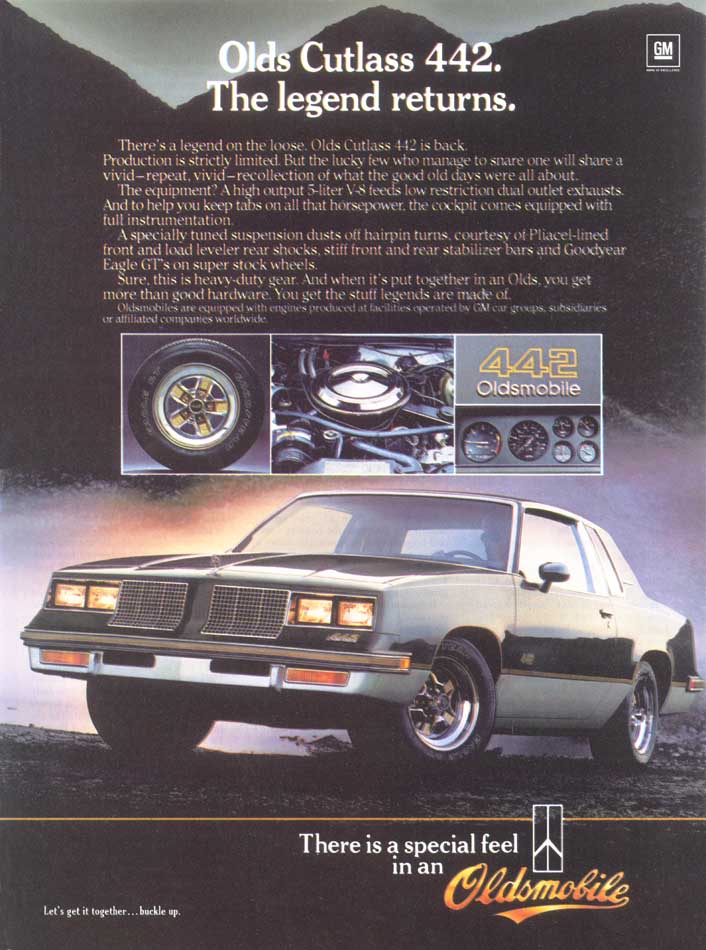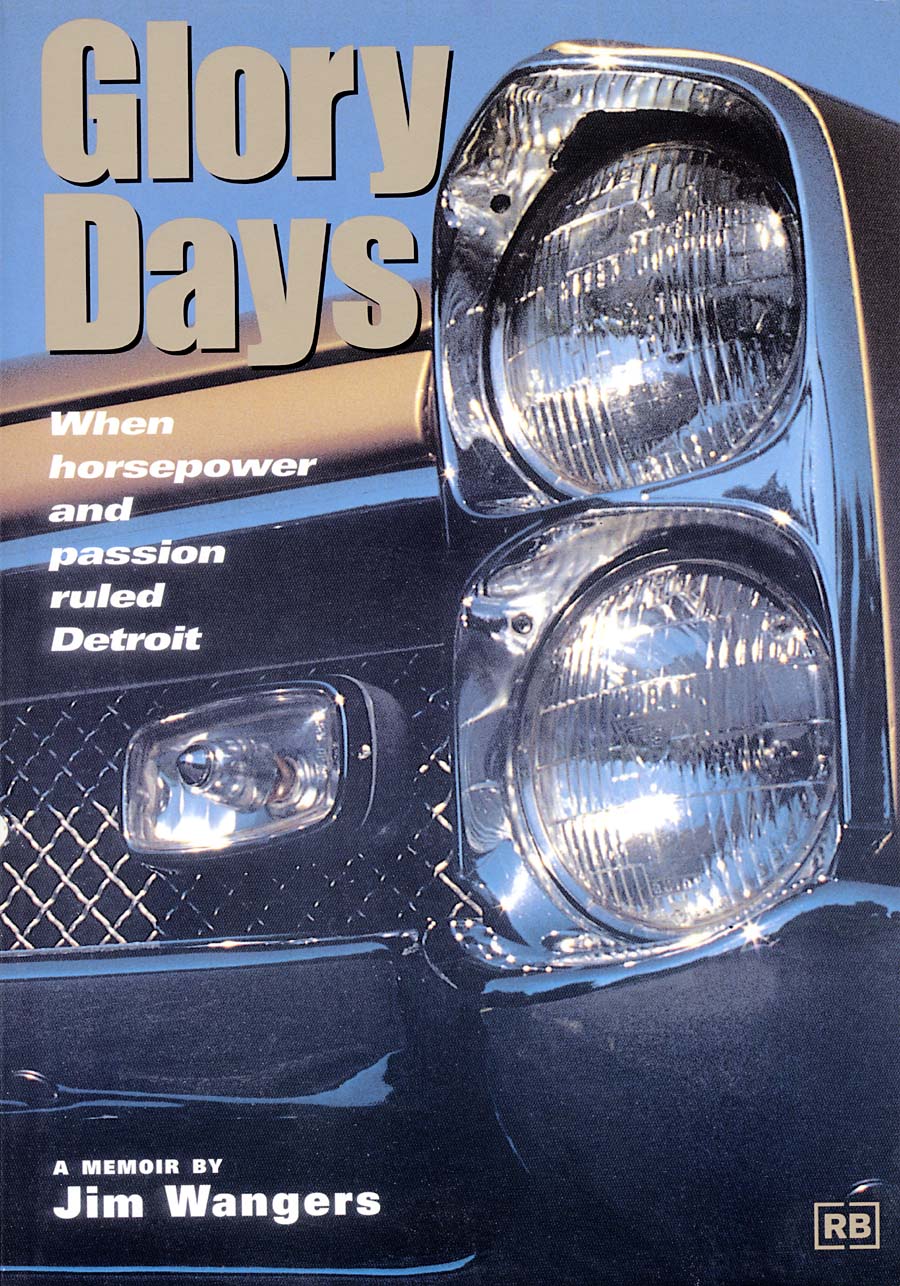The GTO returns
by Eric White, Reprint with Society permission only
This interview took place some eighteen years ago. Since then Jim has divested his interest in AMCI. His current activities have focused on his loyalty to and his love of the dearly departed Pontiac brand.
Wild About Cars: How did AMCI get the program with Chevrolet and the Corvette?
Jim Wangers: For 1985, the second year for the new Corvette, they decided that they wanted to take on the world. They had introduced the car in 1984, and if you remember, it didn’t even have a manual transmission option. It was a good-looking car, but it had a rather poor suspension. It was either too soft or too hard with the Z51. They called it the best new sports car on the planet. That was their ad. That offended everybody. All of the magazines in particular said, “oh yea, let’s find out if it’s the best new sports car on the planet.” They ran some tests, and of course the car got its ass whipped by some nice cars like Lamborghinis, some of the Porches, and the Lotus Esprit. Chevrolet got hurt pretty badly. It’s ’85 when they brought this new car back with a new manual transmission, much better fuel injection, and some serious suspension changes.
They decided as though they had better take on the world. They wanted to do a major comparison program of all these exotic cars against the new Corvette. They had remembered what we had done to them with the agency for Chrysler, so by god they called us and asked us to come in and put a bid down on how we would do this for them. We organized the whole test. That turned out to be a major, major program for us. It got incredibly good exposure, with a lot of good television coverage and a lot of print and the Corvette advertising in the enthusiast books. They did a big story on it in Corvette News. It was really a major effort for us, a big, big, big exposure effort.
From there we went on to do some serious work for Chevrolet truck. What, in effect, had happened is that we had introduced a whole new concept of advertising now in the automotive picture. We were able to do certified comparisons, with the opportunity to offer one manufacturer the ability to go out and say on television, with complete security and freedom of law suit, that their car did in fact out-perform competitors in their segment.
Very shortly after we got in business, we were made aware of a new piece of equipment that was coming into this country from West Germany called the Datron. We could now this kind of comparison testing one step further by using a whole new series of computer-aided sensors. You could measure things that up to now had never been measurable. Things like body roll, steering response, shift shock, comfort factors.
We could actually measure, in the car, the amount of suspension travel that the car was forced to use in order to muffle a disturbance in the road, or a bump, or a rock that we would literally build into the test road. That enabled us to come back with a measurable, documented number that could be used in an advertising claim. “My car is more comfortable under these kinds of conditions, on roads that are kind of a bumpier, or a rocky road.” We were able to give them sound measurements that they had never been able to get before. We were also able to give them security measurements in terms of body roll. This whole thing opened up another new avenue of product comparisons. This has turned out to be, as you might appreciate, a real bonanza for us. We are very, very, very involved, as we’re working for just about everybody.
One of the things that grew out of our advertising and certification ability—one of the biggest jobs we got, again came from Chevrolet. They decided, after bringing out their new full-sized truck in 1988, that they needed to build some macho acceptance. The truck was a good-looking truck, but it was a little effeminate. Just a little too highly styled. A lot of people would say, “I want a truck. I don’t want a damn car. I don’t want a little effete toy out here. This thing won’t stand up.”
Of course Chevrolet knew that it would stand up. So they called us in, and we designed a whole series of side-by-side comparisons in the truck world. They came out with a line, which I’m sure you’ll remember, “Chevy beats Ford.” They took on the Ford truck with all of these rather funny and kind of cartoon-oriented, carnival-oriented comparisons. The one where you got stuck in the water and you had to step out of the Ford to lock the hubs in order to get four-wheel drive. The tug-of-war. The one that went through a big kind of a separation in the road, where the wheels drop down and the chassis hung up and they couldn’t get it out and Chevy drove right through.
We were able, very quickly, to move into a whole bunch of other activities which I frankly was very pleased about. We found that a lot of these side-by-side comparisons would work extremely well in sales training efforts. There’s been a metamorphosis in the whole concept of sales training over the last couple of years. Where they used to do comparison work, and what I have laughingly labeled, and this is an expression that frankly I take full credit for, the “Ashtray Grand Prix.”
We are able to prove we have a better car simply because it has a bigger ashtray, or more rear seat leg room or one more cubic foot of trunk space or one more inch of rear seat head room, which is such bull. The salesmen got very tired of being insulted by their factory people, because they’d come in there and give these kinds of comparisons and expect them to say we’ve got a better car because it’s got more dimensions.
We brought in a whole new philosophy of going in not as a shill from the manufacturer, but rather as an independent third party whose business is to take these cars and put them into side-by-side, non- static comparisons. Not Ashtray Grand Prixs, but dynamic comparisons where we’re measuring performance and handling, and comfort and ride, and quality and sophistication. We’ve got some tests where we can measure fit and finish. We can actually take the ball-bearing thing and go one step further by proving that car “A” has less separation in its hood-to-fender or its door openings or its rear deck openings than car “B” has, because we have a scientific way of measuring that using this new equipment.
We find that when we go into these sales training efforts as an independent third party and praise, in some cases, some of their competition’s product, we tell them to accept the reality of that and here’s how you sell against it. They love that. The salesmen really like to be talked to by serious people. They like it when they’re given the respect of having enough sense to see that their car isn’t all good and the competitors aren’t all shit, you know. This has become an extremely popular thing for us. We’ve been getting calls from everybody in the industry, just about, to participate in this sales training work. We’ll go in and ingratiate them with their salesmen by being honest and telling them the truth that their car is good, but there’s another car that’s pretty good too.
We’ve also developed a good program of comparison learn and drive activity where we show them how to best demonstrate some of the features of their cars. Not on a track or not on a road course, but in an area where we can literally take them within five minutes of their dealership. If you’ve got an urban dealership, here’s how you set one up. If you’ve got a suburban dealership you can find a street like this. Do this exercise, and we give them detailed instructions with films on how to best demonstrate their car, especially in a competitive back-to-back driving situation, which they’re finding is easy for them to do. “Go down to the Toyota dealer and do that in a Camry, then come on back and do it in our Taurus.” That type of thing. This has been extremely successful for us.
We’ve been very, very pleased that the industry has kind of recognized this program. And this has been particularly true of the import industry, who have been much quicker to recognize the reality of upgrading their communications with their own sales people.
Another thing we’ve been very, very lucky at, and had a lot of real success with, is a product called the CVA, which is a Competitive Vehicle Analysis. What we do is get a car from the manufacturer as much as maybe six to eight months before it is ready to be released into the market place, but after it has virtually been finished engineering-wise. This is the car you’re gonna get. There are no more changes to be made on it. We will take that car then and do a behind-the-scenes, side-by-side comparison program. This includes all of the cars with which it’s designed to compete, both in its segment and maybe some cars that are out of the segment that they’d like to find out how they stack up against.
We will do this program for them as much as seven to eight months before their car is ready to be released. We come back with big voluminous reports for them. We make a presentation in which we show them just exactly where they’re strong and where they’re weak; what their car’s strongest features are and how it can be interpreted in their marketing. We do this early enough so that their advertising people, their creative marketing people, and the sales training people, can take advantage of it and help them reach a real specific goal and determine a real specific direction in which they want to take their creative marketing.
This has been an extremely successful program. We’ve been doing this now for, oh, three or four years. We’ve had just about every new Lexus that comes out. We just finished doing one for Mercury on the Mystique. We’re doing one now as we speak on the new Continental. We just finished the Mazda Protegé. We did a Mazda Millenia, that Millenia S effort that they got through. We just finished the new Toyota Avalon and the Nissan Maxima. We did the Monte Carlo and Lumina for Chevrolet. We’re just finishing the Aurora, well about four or five months ago, for Oldsmobile. We’re about to get a bunch of new Cadillac stuff.
So, it’s been a delightful program, and of course for me what it has done is it’s literally given me a totally new second career. I’m buried up to my eyeballs in cars, which is exactly what I wanted to do with the end of my career, the end of my life. I couldn’t be happier.
WAC: You’re also involved with the recent resurgence of interest in the GTO.
JW: With this GTO thing coming back in such incredible strength, I’ve had the opportunity to share some of my other automotive experiences as well.
Probably the most satisfying thing that’s happened to me in my career in the business, which I’m so grateful for–I really am, and it really makes me feel so good–is working with today’s automotive critics. The tough guys in the press today have come to have a lot of respect for me. I get calls from just about everybody in the business, whether it’s the Wall Street Journal, Automotive News, Autoweek, or Time magazine to Ad Age, Hot Rod, High Performance Pontiac or Muscle Car Review. Not about what happened back in 1964 when we brought the GTO out, but about what’s happening in the business today. I enjoy that, because I really consider myself a good analyst, a good marketing student, a good marketing observer. I recognize where some serious mistakes are being made and what necessary changes I think they should be doing to correct those mistakes. I feel like I’m doing some good. In effect, calling attention to some serious problems and some serious situations maybe where people who are wrapped up in them don’t always see.
WAC: Do you find it difficult to be so frank with certain clients?
JW: Sometimes it’s difficult, because here we are in the business of doing work for a lot of these people. You don’t like to necessarily kick people who may be clients or potential clients, but on some occasions you have to. You’ve got to call a spade a spade. That’s really how I’ve been able to get the respect from these writers and these people, because they know when they call me they get an honest, straight-forward answer. You tell it like it is. It’s not always critical, sometimes it’s very praise worthy, but at least we’ll have something to say about a subject rather than the sometimes relatively mild, nice comments anybody could make about any subject, you know, just to get out from under the hood.
WAC: Are you enjoying the current GTO revival?
JW: From a personal standpoint, I could not be happier with what I’m doing with my life now. I get a tremendous amount of pleasure out of the GTO exposures. I’ve been doing some consulting work with Pontiac recently about whether there ought to be another GTO or not. I’m not sure I necessarily ingratiated myself with them, because of some of the things that I’ve said. I think that Pontiac’s got a very serious reason to be somewhat concerned, because it’s foolish to turn your back on the reality of this incredible name recognition that exists out there with this car. And yet by the same token, it’s also foolish to do it simply because the opportunity is there to do it. I’m not sure that there isn’t any car in the Pontiac lineup that couldn’t benefit by having maybe a limited production specialty version, a nicely packaged version, of that car. I’m not sure, however, that it would benefit any from being called GTO.
WAC: Was there ever a time when Pontiac would have benefited most from a new GTO?
JW: I’m not so sure that right now isn’t the right time. There’s never been a time when the name has had more top of mind awareness and had more recognition, frankly, because of a lot of press I’m generating myself. I don’t know if you’ve seen this new story that’s in Autoweek this week.
The current issue of Autoweek’s got a nice story on the GTO’s history and the thirtieth anniversary thing. It’s been in a lot of television exposure, lots of magazines and newspapers. Pontiac has learned the most unbelievable figures. It’s hard to believe that over 75% of the licensed drivers in the United States can recognize or will associate the name GTO with Pontiac. Well that’s pretty strong. That’s something you can’t necessarily turn your back on. You’ve got to be serious about giving that some consideration. On the other hand, you don’t just do it because of that kind of a thing unless it’s an honest representation, and there is, in fact, a really honest car that can benefit by having this name. You’re better off just letting it live as the legend it is today.
Unfortunately the legend is a whole lot more significant than the car ever was. People think of that car as being a whole lot better car than it really ever was. You know, the performance and the excitement and the ambiance and the avant-garde-ness of it.
WAC: Doesn’t that have a lot to do with the advancing technology over the past twenty-five to thirty years.
JW: Nope. I mean they’re building better cars today than they were back then. They can build a car today that would be a lot better car than those cars were. I still don’t know that that necessarily is going to do what they need to do. The reality, of course is, that the people that we live with, the people that we are communicating with at these meets, they’re not the buyers for that car, for a new version of that car. In fact, it’s useless to even waste your time talking to them about it. All they want is a stump-pulling V-8 with rear drive. The new buyer for that car is really the twenty-five to the forty year old who knows enough about the GTO to know that it was a pretty swingin’, avant-garde thing. That person might be thinking about buying a cute toy “whatever”, maybe a cute Toyota or a cute Nissan.
Now somebody from the States brings in a car domestically that’s pretty good lookin’, pretty quick, pretty nicely put together, and it’s got some performance ambiance about it. This potential buyer knows not a whole lot about the GTO, but he knows that at one time it was a hell-of-a car. By god, maybe the new one’s pretty good too. He’s used to front-drive. He’s not going to question it because it’s a front-drive car. He’s not going to question it because it’s got torque steer, or because it’s quick or anything. That’s what they’ve grown up with. This is the car of today’s idiom. That kind of a package, I think, with the name GTO could benefit.
Now whether the benefit is so much better than if you brought it out and called it anything else– you know, any contemporary new name you might want to come up with–it might be just as successful. The gamble you take by bringing out a car that will bomb and hurting the name, hurting the name significantly, is also a serious one. It’s better off for Pontiac that that legend exists out there. I think that by taking it to the heights that we have climbed over the last six months, in terms of promoting it and celebrating the anniversary, has been a good statement for Pontiac.
The fact is, not only was it a good Pontiac, but it was really a car that invented a segment. We’re celebrating not only the anniversary of a Pontiac car, but also the anniversary of a movement–the muscle car movement. It’s a whole segment of cars. Oldsmobile really couldn’t do it, Plymouth couldn’t do it, and Ford couldn’t do it, even though this was a Mustang anniversary. The Mustang doesn’t stand for that strong an image, that performance oriented, sort of macho image. But I don’t think anybody who would be a candidate, a serious candidate, for that car today would have had any experience with the original ones. But If so, this only because they are related to some collector, or something.
WAC: What’s the significance of the thirtieth anniversary as compared to the twenty-fifth or twentieth?
JW: Nothing really, except that the thirtieth is timely. This is now. I think that the market place is somewhat the same in ’94 as it was in ’64. This very thing could have been done five years ago, at the twenty-fifth. It could have been done very nicely in ’87, or ’89, depending on how you want to look at it. There was a little bit of an effort to kind of make a GTO available in the marketplace back in Detroit, at the national event back there at the Kingsley Inn [1985 GTOAA International Convention in Bloomfield Hills, MI]. They showed that car. They might do the same thing at the thirty-fifth, if there hasn’t been a car out by then.
WAC: Did you have anything to do with the Mustang GT or the Grand National?
JW: No. Not as far as promoting either of those. Not out of that, as far as doing anything specifically for either of them. I did literally invent the Cobra II. I’ve done no work for Buick in any kind of training capacity or in the development of special limited production cars or anything. The Buick is not really a brand that gives itself very much to limited production specialty vehicles.
WAC: The Grand National was a kind of a fluke then?
JW: The Grand National was car that Buick kind of backed into. It was a magnificent car. It should have been a Pontiac.
What a great engine and what a great package that would have been to put into a Grand Prix. In fact, they gave it to Pontiac when they put it in that Turbo Trans Am. The people at Pontiac acted very stupidly, I thought, and they decided that they didn’t want the fastest Pontiac ever built to have a Buick engine in it. If they could’ve had that turbo V6, and you couldn’t buy it as a Camaro, that would give Firebird just another excuse for existence, which they don’t have today. They bend the sheet metal a little different than the Camaro, but there are just as many people that think the Camaro is a better looking car than the Firebird.
I can’t jump up and down so much about what they’re doin’ for Pontiac. I have a real hang-up, frankly, with the way they’re marketing the Trans Am today. It used to be, during the real great success period in the late seventies, that the nicest thing you could say about a Firebird was to call it a Trans Am. That was the best. Then in comes the Formula, in comes the GTA, then comes the Trans Am GTA, then comes the Turbo, and then comes the Firehawk. I mean, come on. There are only so many cars out there. You’re only building less than a hundred thousand. You don’t need seventy-three different models. They all walk on each other.
There should be a Firebird and a Trans Am. Trans Am was the number one image-car in this country in ’77, ’78, ’79, with a couple of little features; the shaker hood and that damn beautiful decal the “screamin’ chicken” on the hood. And if anybody would have copied either of those features, the first thing that everybody in the press would say is, “Big deal, they’re copying the Pontiac Trans Am.” Yet when they restyled it in ’82, it came back with neither the shaker hood or the screamin’ chicken, and the car immediately kind of worked its way to the back in sales, and it hasn’t really fully recovered yet.
WAC: Didn’t Oldsmobile make the same mistake with the 442 when they reintroduced it and didn’t make it special enough.
JW: Yea. The 442, unfortunately was a prostitute. They didn’t do a good job with it. They brought it back with a four-cylinder engine.
WAC: I’m thinking of the late ’80’s example.
JW: It was worse in the late ’80’s. There all it was was a decal. That was not a smart way to go. They’ve prostituted 442 a couple too many times. Pontiac is to be given a lot of credit for never having prostituted the GTO.
We had a program, as a matter of fact, all worked out on General Lee. ‘The Dukes of Hazzard’ was the show, where they were gonna put one of those new Charger 2.2’s in the show. We were gonna call it “Old Half.” General Lee was always called “Old One”, and we were gonna have a little Charger 2.2, an orange Charger 2.2 which was gonna be called “Old Half.”
WAC: Jim, with that I think we’ll have to end this interview. Thank you so much for your time.
JW: Eric, you’re very welcome.
In collaboration with Pontiac historian and respected author, the late Paul Zazarine, Jim released his memoirs in book form in 1998, titled Glory Days: When horsepower and passion ruled Detroit. All of the subjects touched on by this interview are covered in much more depth between the covers of this book.
Jim’s most recent collaboration, Pontiac Pizazz! was released in 2007. With graphics by legendary automotive illustrator, Art Fitzpatrick, and narrative by Jim, this book highlights fifteen of Jim and Art’s favorite Pontiacs of all time.
Jim Wangers Image 5-1
Comparison testing in advertising is finally approved in the early 1980s. AMCI perfects the artform.
Jim Wangers Image 2-2
The 1984 Corvette advertisement/folder that put Chevrolet on the wrong side of the automotive press.
Jim Wangers Image 2-6
A second ad from the same 1988 ad series comparing the MPG capabilities of Ford’s F150 to Chevy’s C1500.
Jim Wangers Image 2-7
he first GTO concept vehicle created by PMD after they canceled the model in 1974. This 1986 version is based in the Grand Am. It is powered by a 2.7L Super Duty 4-cylinder, and features a 4-bucket-seat interior, performance suspension and GTO badging.
Jim Wangers Image 2-11
Here’s a clip from Autoweek explaining the new-for-’91 Oldsmobile Quad442 W41 package.




